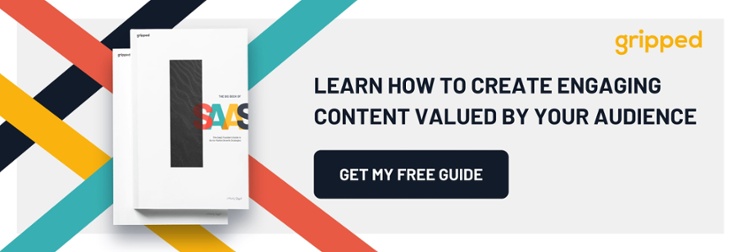They say first impressions count, and the onboarding process is a tone-setter for the relationship you will have with each customer. Get it right and it can lead to a long-lasting relationship that will boost your customer lifetime value and provide a healthy contribution to revenue. Get it wrong, and it won’t be long until you see that customer churn, and for Software-as-a-Service (SaaS) businesses using a recurring revenue business model, this can hurt the growth of the business.
In this post we’ll look at customer onboarding, its importance in the world of SaaS and how to get onboarding right for customers and end-users. Keep in mind, of course, that the buyer is not always necessarily the end-user. First, however, let’s make sure we’re all on the same page when we talk about customer onboarding.
Section 1:
What is customer onboarding?
In its simplest terms, customer onboarding is the management of the beginning of a customer’s journey with your company. It’s all about ensuring that you make the right first impression and prevent the customer from contributing to your churn rate. Sometimes the customer and the end-user will be the same person, but this is not always necessarily the case.
Customer onboarding comes from how well you’re able to create value in the eyes of the customer and build faith in your brand. It’s all about making sure that the journey from sales conversion to paying subscription is frictionless, satisfying and high-value.
User onboarding is more to do with the functionality, interface and user-friendliness of the SaaS product itself. When it comes to best practice, there’s certainly some overlap between the two but both aim to achieve the same goal — retaining the customer through a satisfactory customer experience.
Section 2:
Customer onboarding best practice
When you approach the issue of customer onboarding, it’s important to approach matters from the customer’s point of view rather than your organisation’s. Yes, of course you want to reduce churn. However, a more helpful way to address customer onboarding is to think of their desired outcomes. When your customer onboarding process is in line with these, retention is the natural consequence.
Why would customers look for alternatives if you’re helping them achieve all the right outcomes? With this in mind, here are some tips for customer onboarding best practice in SaaS.
Bake customer success into the crust of your sales process
It’s all-too-easy to think of your sales team as closers and nothing more. But when your sales professionals are focused solely on closing deals, there’s a potential for a lack of alignment between sales and customer success. Your sales team can play a huge role in managing customer expectations and ensuring that they get exactly what they want from your product. When there’s a gulf between what is promised and the actual customer experience this can create issues that may lead to churning.
The more sales teams know about the onboarding process and how it contributes to customer success the more accurately they can pitch, represent and eventually sell the product.

Get to know your customer’s needs
Customer expectations can be a serious sticking point when it comes to the onboarding process. As such, it’s essential that you take the time to get to know their needs. This applies to familiarising yourself with the realities, pain points and barriers to success inherent in their industry. It also means carrying out customer-specific research to ascertain their operational needs and identify opportunities for your product to deliver customer success.
This means getting feedback from your sales teams to establish exactly how best to position your product for this customer and tailoring their experience towards their needs. Another great way to engage customers during the onboarding process is through a workshop, which allows you to really get to know that customer and their pain points, as well as introduce them to the immediate features that will help them and get them set up. Having a familiar face to your brand will also help humanise the onboarding process.

Keep the momentum going
Time is of the essence. When you close a deal, your customer is likely to feel pretty good about your product and looking forward to all the ways in which it can make their lives easier. But unless you maintain communications within the early stages, their opinion of you has nowhere to go but down.
It’s advisable to make post-sales contact within 24 hours to see how the customer is getting on with the product and advise on any teething problems or hurdles they encounter. While this may involve some liaison if the customer is not the end-user the customer will nonetheless appreciate the effort and report back to you if there’s anything you can do to help.

Maintain a steady stream of useful content
Making yourself available to the customer is a crucial part of the onboarding process. However, some customers are problem-solvers by nature and would rather figure things out for themselves. When they have easy access to wealth of online resources in the form of FAQs, infographics, tutorials, and the like they have the means to do exactly that. Video is a really powerful way to show off your product’s features and enhance the customer experience.
Yes, you’ll have to take the time to compose these resources but it’s a great way to add value to your product and your brand.
Start creating value quickly
Speaking of value, this is a commodity that the customer needs to experience quickly. The sooner they experience their “Eureka” moment, the more faith they invest in your product. For low-touch onboarding (one size fits all onboarding with passive support systems) this can be achieved by giving customers easy access to the right resources. For high-touch onboarding (where onboarding is tailored to individual customers’ specific needs) you need to adopt a more personal touch.
Fortunately, because you’ve taken the time to get to know the customer’s needs and preempt potential issues, you’ll be able to do this quickly and meaningfully.
Section 3:
SaaS user onboarding best practice
We’ve looked at building value in the customer onboarding process, but what about the user? It would be a fatal mistake to assume that if the end-user isn’t happy that they’ll keep it to themselves and not report back to whoever ordered your product.
The user needs onboarding in a way that is more specific to the operation and functionality of your product. Like the customer, they will also need access to support and resources to educate themselves. However, you’ll need to pay close attention to your UX (User Experience) and UI (User Interface) to make sure that your product creates frictionless onboarding.

Make it personal
Personalisation is central to harmonious user onboarding. It would be wrongheaded to assume that different users (even those who work in the same industry) will all get the most out of your product by using it in the same way.
You need to make the onboarding experience as personal and unique as possible by attuning it to;
- Their individual needs. Even changing the experience based on the landing page they’ve come from allows you to better suit the customer’s needs.
- Industry trends like industry or location.
- Data from “heat maps” of their movement through your interface.
- Their level of expertise.

Make sure they know where to direct their attention
Using a new software platform for the first time can feel like walking into a busy shopping centre on Christmas Eve. There’s so much vying for your attention that you really don’t know where to look. You can make their lives easier by using prompts that guide them through core processes. Start with these and work your way outwards. Remember the problem that the user is trying to solve rather than looking to blow their mind with a wealth of impressive features. Let them discover these in their own time.
Break everything into small, simple stages. The less there is to do at each, the more the user will get a sense of progression rather than feeling like they’re treading water and getting nowhere.

Ask for their feedback early on
You may assume that it’s good practice to wait a few weeks for users to get to grips with your product before soliciting feedback. But the most valuable feedback might just be the feedback they send within the first week. Don’t make the mistake of assuming that unhappy users will take the time to complain.
A follow-up call or an automated email can help users to share their frustrations, misunderstandings or pain points with you rather than staying silent and eventually adding to your churn statistics.

Focus on benefits and outcomes rather than features
You’re understandably proud of the features you’ve developed. But an onboarding process that just dryly explains the features will likely alienate some users. They don’t want to know about the product’s capabilities so much as how it can help them solve a specific problem or achieve a specific outcome. Focus on this and they’ll perceive the value of your features on their own.
The tips outlined in this article will ensure you are adding value throughout the onboarding process with both your customer and end-user in mind. With an effective customer and user onboarding process in place, you have the power to reduce churn and grow your company sustainably, retaining happy customers as you onboard new ones.


